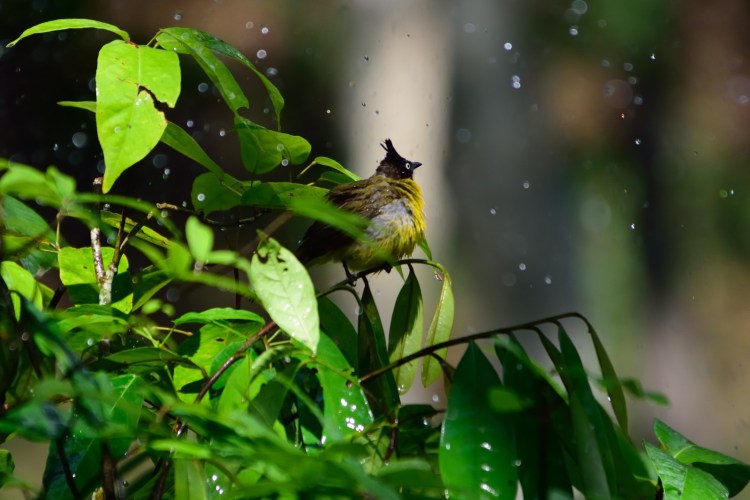And Other Flight Facts

The short answer as to why birds don’t usually fly in the rain is really the same reason as to why people don’t do much outside in the rain. It just isn’t practical. Birds are conserving their body heat and hunkering down in trees and near their nests during rain storms. They may also find shelter under eves if the rain is very heavy, or find cover from leafy trees and shrubs.

If you see birds out and about on a rainy day, rest assured it is probably going to rain all day. They may need to gather food for baby birds, and instinct tells them the rain is not going to give them a break. So the birds will go ahead and get out in the rain. Birds are basically waterproof. Their feathers are designed to repel water, so the rain doesn’t actually bother them. They just don’t enjoy flying through torrential downpours. The wings of birds do not get as much lift when it’s raining so it is harder to fly, and takes more energy. A bird will hunker down rather than take flight in wind and rain for this reason. Especially smaller birds conserve energy during storms if possible.

Air pressure does change flight which accounts for why most birds fly at altitudes of less than 20,000 feet. However, there are larger birds that have flown in higher altitudes because of their lung capacity. Bar-headed Geese migrate across the Himalayan Mountains and fly at about 20,000 feet above sea level. They don’t fly over Mount Everest, but 20,000 feet is still pretty high.
Birds in flight lead to the discussion of the Gray-headed Albatross. This bird has been recorded by the scientific community to have flown around the globe in 46 days. Another bird following in the Albatross’ footsteps is the Great Frigatebird. This bird doesn’t fly as far as the Albatross, but can fly for up to two months without touching the ground. Much of it’s flight is over the ocean, so it cannot touch ground.

The Frigatebird lives in the Galapagos Islands and cannot swim. So when the bird travels, scientists have tracked that the bird actually sleeps in flight. They have planted EEG devices in several bird’s skulls and have recorded that the Frigatebirds sleep while flying for about 45 minutes each day in short 10-second bursts. When they are on land, they sleep for 1-minute at a time for a total of 12 hours.
As always, we can learn from nature. No matter how far a bird has to travel or how strong the instinct is to fly, sleep is vital to the bird’s survival. Without those short bursts of sleep, scientists believe the Frigatebirds would not be able to continue their flights over the sea. And scientists suspect the short breaks of the Albatross are both for food and much needed sleep. Humans also need sleep to function as our best selves.

Recent research has said adult humans need 7 to 8 hours of sleep each night. This blows the old theory for some of us who used to believe 6 hours was enough. We have learned life expectancy and productivity over the long haul, depend on us getting 7 to 8 hours of sleep each night. Birds are amazing creatures. Most of life’s lessons can be learned by watching and studying how birds live, eat, sleep, and fly.





